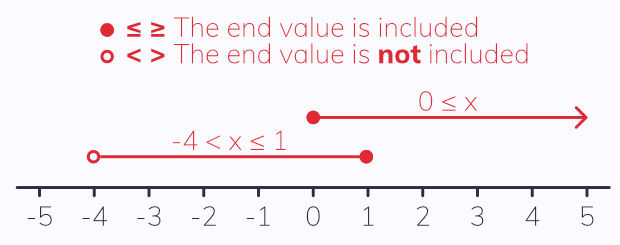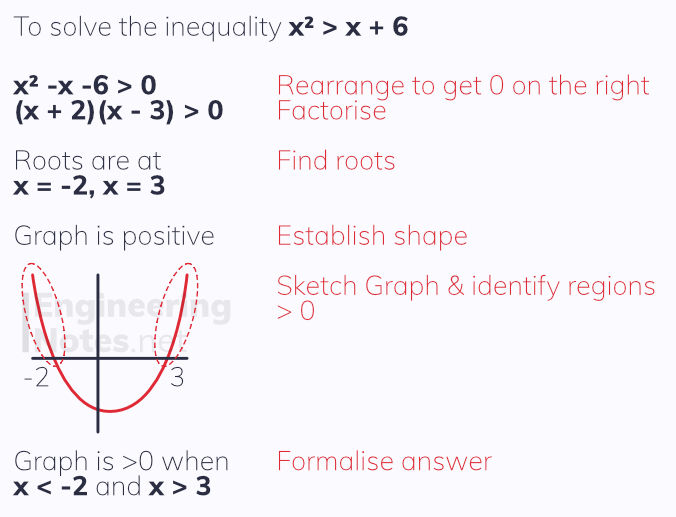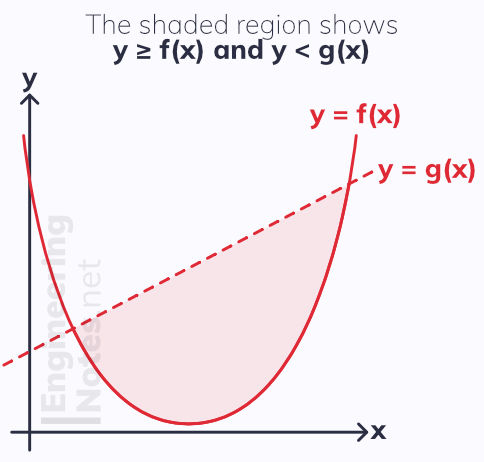Quadratic & Simultaneous Equations and Inequalities
- A-Level Maths

- Sep 2, 2020
- 2 min read
Updated: Dec 7, 2020
The standard format of a quadratic expression is ax² + bx + c
There are three ways of solving quadratic equations:
Factorising
Factorise a quadratic in the form ax² + bx + c = 0, and set each bracket to equal 0 to find the values of x (the roots).
The Quadratic Equation

The (b² - 4ac) inside the square root is known as the discriminant, and is used to show how many roots a quadratic has:
b² - 4ac > 0: The quadratic has two distinct roots
b² - 4ac = 0: The quadratic has one repeated root
b² - 4ac < 0: The quadratic has no real roots
Completing the Square

More commonly, quadratics are in their standard form. In this case, this version is used:

Simultaneous Equations
Linear Simultaneous Equations
There are two ways of solving linear simultaneous equations: elimination and substitution.
For example, solve the following simultaneous equations:
x + 3y = 11
4x - 5y = 10
Elimination
Multiply the first equation by 4
4x + 12y = 44
4x - 5y = 10
Subtract
17y = 34
y = 2
Substitute this into equation 1
x + 6 = 11
x = 5
Substitution
Rearrange the first equation to make x the subject
x = 11 - 3y
Substitute this into the second equation and solve
4(11 - 3y) - 5y = 10
44 - 12y - 5y = 10
44 - 17y = 10
-17y = -34
y = 2
Substitute this into the rearranged equation 1
x = 11 - 3(2)
x = 5
Quadratic Simultaneous Equations
Two simultaneous equations, one linear and one quadratic, can have up to two pairs of solutions. Don't get confused between the tow pairs!
You always use the substitution method above to solve quadratic simultaneous equations - rearrange the linear equation and sub into the quadratic:
Solve the simultaneous equations, x + 2y = 3, and x² +3xy = 10
Rearrange linear equation to make x the subject
x = 3 - 2y
Substitute into quadratic equation & solve
(3 - 2y)² + 3y(3 - 2y) = 10
9 - 12y + 4y² + 9y - 6y² = 10
9 - 3y - 2y² = 10
2y² + 3y +1 = 0
(2y +1)(y +1) = 0
y = -1/2, -1
Find the corresponding x values
x = 3 - 2(-1/2)
x = 4
x = 3 - 2(-1)
x = 5
Get the pairs together correctly:
x = 4, y = -1/2 and x = 5, y = -1
Graphing Simultaneous Equations
The solutions to a pair of simultaneous equations represents the intersections between their graphs. For a linear and quadratic pair of simultaneous equations, you can use the discriminant of the substituted equation (the linear equation substituted into the quadratic equation) to show whether or not there are any solutions, and if so, how many.

Inequalities
There is certain notation for inequalities on a number line:

Linear inequalities are rearranged to make the variable the subject.
To solve a quadratic inequality:
rearrange so that to the right of the inequality sign is 0
solve the remaining quadratic on the left
Sketch this equation roughly to see where the roots are and if it is positive or negative
Identify the correct section.

Regions on Graphs
It is possible to show regions closed off by one or multiple lines on a graph. Again, there is certain notation to be aware of:
Dashed lines do not include the curve
Solid lines do include the curve
Shaded areas represent the defined region




Comments